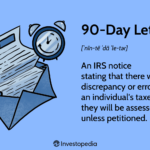What Is a 457 Plan?
A 457 plan is a tax-advantaged retirement savings plan offered to employees of many state and local governments and some nonprofit organizations. Like the better-known 401(k) plan in the private sector, the 457 plan allows employees to deposit a portion of their pre-tax earnings in an account, reducing their income taxes for the year while postponing the taxes due until the money is withdrawn after they retire.
A Roth version of the 457 plan, which allows after-tax contributions, may be allowed at the employer’s discretion.
There are two main types of 457 plans:
- The 457(b): This is the most common 457 plan and is offered to state and local government employees and nonprofits. It is a retirement savings plan that offers tax advantages to participants.
- The 457(f): This plan is offered only to highly compensated executives in tax-exempt organizations. It is a supplement to the 457(b) and it is, essentially, a deferred salary plan.
Key Takeaways
- The 457 plan is an IRS-sanctioned, tax-advantaged employee retirement plan.
- The plan is offered only to public service employees and employees at tax-exempt organizations.
- Participants are allowed to contribute up to 100% of their salaries up to a dollar limit for the year.
- The interest and earnings in the account are not taxed until the funds are withdrawn. The exception is the Roth option, if available, in which only post-tax money is deposited.
Watch Now: What Is a 457 Plan?
Types of 457 Plans
As noted, the 457 plan comes in two flavors, the 457(b) and the 457(f).
The 457(b) Plan
The 457(b) plan is most often offered to civil servants, police personnel, and other employees of government agencies, public services, and nonprofit organizations such as hospitals, churches, and charitable organizations.
It is similar to a 401(k). Participants set aside a percentage of their salary into a retirement account. The employees choose how their money is invested from a list of options, mostly mutual funds and annuities.
The account grows in value without being taxed over the years. When the employee retires, taxes will be due on the amount withdrawn.
Employees are allowed to contribute up to 100% of their salary, provided it does not exceed the dollar limit set for the year.
If the 457 plan does not meet statutory requirements, the assets may be subject to different rules.
457(b) Contribution Limits
As of 2022, employees can contribute up to $20,500 per year to 457 plans. This limit increases to $22,500 for 2023.
In some cases, workers are allowed to contribute even more. For example, if an employer permits catch-up contributions, workers over the age of 50 may pay in an additional $6,500 a year, making their maximum contribution limit $27,000 ($20,500 + $6,500) in 2022. The catch-up contribution increases to $7,500 for tax year 2023, making the maximum contribution limit $30,000 ($22,500 + $7,500).
Also, 457(b) plans feature a “double limit catch-up” provision. This is designed to allow participants who are nearing retirement to compensate for years in which they did not contribute to the plan but were eligible to do so.
In this case, employees who are within three years of retirement age may contribute up to $41,000 in 2022 and up to $45,000 in 2023.
Advantages and Disadvantages of a 457(b) Plan
The 457(b) plan has all of the advantages of a 401(k), although there are some differences.
Advantages of a 457(b)
Tax Benefits
If a traditional rather than a Roth plan is chosen, the contributions are deducted from an employee’s paycheck on a pre-tax basis. That amount is subtracted from the employee’s gross income, effectively lowering the person’s taxes paid for that year. For example, if Alex earns $4,000 per month and contributes $700 to a 457(b) plan, Alex’s taxable income for the month is $3,300.
Employees invest their contributions in their choice or choices from a selection of annuities and mutual funds.
All interest and earnings generated from year to year remain untaxed until the funds are withdrawn.
Withdrawals Without Penalty
There is one big difference between the 457(b) and other tax-advantaged retirement plans: no penalty for early withdrawals in some circumstances.
If an employee retires early or resigns from the job for any reason, the funds can be withdrawn without incurring a 10% penalty from the IRS. Early withdrawals from most retirement plans are subject to the penalty except for certain hardship reasons. (The penalty was waived for two years during the COVID-19 pandemic.)
A 457(b) account holder can take a penalty-free withdrawal without changing jobs, like a 401(k) account holder. The list of acceptable reasons, however, is limited to “unforeseeable emergencies.”
Exceptions to the Rules
Early withdrawals from a 457(b) are subject to the 10% penalty if the account holder rolls the funds over from a 457 to any other tax-advantaged retirement account, such as a 401(k). This would happen if, for example, a government employee quit to take a job in the private sector.
In addition, anyone who takes money out of a retirement account early must keep in mind that any income taxes due on that money will be owed in the year that the withdrawal is taken.
Disadvantages of a 457(b) Plan
One potential advantage of most tax-advantaged retirement savings plans is the employer match. An employer may choose to match some portion of an employee’s contribution to the plan. An employer who matches the first 3% of the employee’s contribution, for example, is presenting the employee with a 3% raise.
Employer Match Is Rare
Employers can match their employees’ contributions to a 457(b) but, in practice, most don’t.
If they do, the employer contribution counts toward the maximum contribution limit. This is not the case for 401(k) plans.
For instance, in 2022, if an employer contributes $10,000 to a 457(b) plan, the employee can add only $10,500 for the year until the $20,500 contribution limit is reached (except for those eligible to use the catch-up option).
457(b) Advantages
-
Looser rules for early withdrawals without a penalty.
-
Early distributions allowed for participants who leave a job.
-
As with other retirement plans, no taxes are due until money is withdrawn.
457(b) Disadvantages
-
Employer contributions count toward contribution limit the year they vest.
-
Employer contributions subject to vesting schedule. If the employee quits, non-vested funds are forfeited.
-
Limited investment choices compared to private sector plans.
457(b) vs. 403(b)
The 403(b) plan, like the 457(b), is mostly available to public service employees. They are a particularly common benefit offered to public school teachers.
The 403(b) has its origins in the 1950s when it exclusively offered an annuity to participants. Participants still have the option of creating an annuity but they also can choose to invest in mutual funds.
In fact, the 403(b) has changed over the years until it closely resembles the private sector’s 401(k) plan, although the investment choices offered to participants are relatively limited.
The annual contribution limits are identical to those of the 457(b) and 401(k) plans.
If you’re a public employee, your employer may well offer a 457(b) or a 403(b).
Advisor Insight
Dan Stewart, CFA®
Revere Asset Management, Dallas, TX
457 plans are taxed as income similar to a 401(k) or 403(b) when distributions are taken. The only difference is there are no withdrawal penalties and that they are the only plans without early withdrawal penalties. But you also have the option of rolling the assets in an IRA rollover. This way, you can better control distributions and only take them when needed.
So if you take the entire amount as a lump sum, the entire amount is added to your income and may push you into a higher tax bracket.
With the rollover route, you could take out a little this year, and so on as needed, thus controlling your taxes better. And while it remains inside the IRA, it continues to grow tax-deferred and is protected from creditors.
What Is the Difference Between a 457(b) Plan and a 457(f) Plan?
The 457(b) plan is a version of the 401(k) plan that is designed for public and nonprofit workers. It helps employees save for retirement while deferring the tax bill until they retire and start withdrawing the money. (The Roth version, which is available only at the employer’s discretion, takes the taxes upfront, so no taxes are usually due on withdrawals.)
The 457(f) plan is also known as a SERP for Supplemental Executive Retirement Plan. It is a retirement savings plan for only the highest-paid executives in the tax-exempt sector. They are mostly employed in hospitals, universities, and credit unions.
A 457(f) is a supplement to a 457(b). Employers make additional contributions to the employee’s account, beyond the usual limits. These are negotiated by contract and amount to a deferred salary adjustment.
If the executive resigns before an established vesting period, the 457(f) contribution disappears. The plan is intended as an executive retention strategy, commonly known as “golden handcuffs.”
Is a 457(b) Plan Better Than a 401(k) Plan?
For all intents and purposes, a 457(b) is just as good as a 401(k) plan. If you’re employer is a public agency or a nonprofit, it’s probably your best option for retirement savings.
Assuming you opt for a traditional plan rather than a Roth plan, you’ll be lowering your taxable income from year to year while plunking that money into a long-term investment account. The money won’t be taxed until you retire and start taking withdrawals.
(If it’s a Roth, you’ll pay the taxes up front and usually will owe no taxes on the money you deposited or the profits it earns over the years.)
On the downside, your contributions will probably not be matched by your employer. But that’s just reality in the nonprofit sector, not a rule of the plan.
How and When Can I Make Withdrawals From My 457(b) Account?
One advantage of a 457(b) is that you can take early withdrawals without paying a tax penalty for any “unforeseeable emergency.” This isn’t a good idea, since you’re plundering your retirement savings, but unforeseeable emergencies do happen. And, you’ll owe income tax for that year on the amount you withdraw.
The required minimum distribution (RMD) you must take is determined by an IRS worksheet. An RMD is a minimum amount that must be withdrawn from certain retirement plans, like a 457(b), each year once you reach a certain age. If you were born between 1951 and 1959, the age is 73. If you were born in 1960 or after, the age is 75. This is an increase from the previous age of 72.



